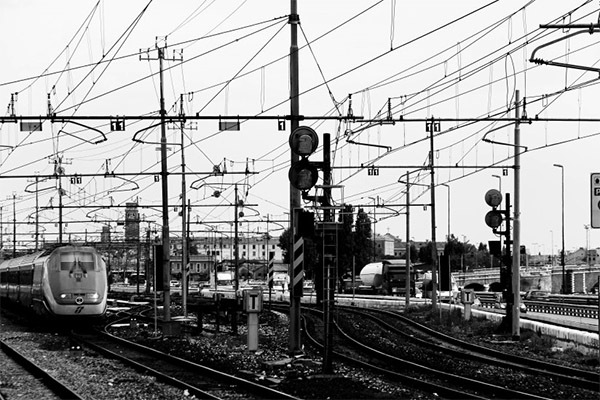On August 31, Illinois governor Patrick Quinn announced that $102 million in taxpayer funds will be spent improving the high-speed rail line between Chicago and St. Louis over the next three years. The money comes from $550 million in railroad-specific allotments, contained within the state’s $31 billion Jobs Now! capital spending program, signed into law in 2009.
“This investment is going to put people to work and take us one step closer to completing the high-speed rail connection between Chicago and St. Louis,” Quinn said in a statement. “None of this work on the Chicago-St. Louis high-speed line would be possible without the outstanding cooperation of the Union-Pacific Railroad. Investing in our Chicago-St. Louis line today will pay dividends to Illinois residents for years to come.”
The multimillion-dollar investment will be used to build a second set of tracks between Mazonia and Elwood, and a new Kankakee River bridge deemed necessary to meet the demands of increased capacity, according to the governor’s press release.
Passenger trains currently travel at 110 mph between Dwight and Pontiac. By the end of 2015, the trip duration between Chicago and St. Louis will be reduced to five hours, from the current five and a half hours. When all of the improvements are finished in 2017, the trip will be reduced even further, to four and a half hours.
Dubious Claims
The governor’s office claims that the railway work will “create or support” 918 construction jobs over the next three years.
However, policy experts say pouring government money into high-speed rail is a poor investment, especially considering the large amount of taxpayer dollars at stake.
Randal O’Toole works on urban growth, public land and transportation issues as a senior fellow at the Cato Institute. He says high-speed rail projects are usually fools’ errands.
“Beside the fact that the entire project will cost hundreds of millions of dollars, all it does is supposedly reduce the travel time a bit. Is this amount worth that?” O’Toole asked. “We already have an extremely efficient and cost-effective way of traveling from St. Louis to Chicago, it is called airplanes.”
O’Toole also pointed out the flaws of touting the environmental benefits of high-speed rail and attacking the environmental dangers of air travel.
“Usually on these projects, people like to say using railways are better for the environment than flying in planes,” O’Toole said. “That’s true on its face today, but what’s buried under that assertion, is that right now planes are becoming more fuel efficient by about three percent a year while trains aren’t increasing their energy efficiency at all. In a few years, planes will be better for the environment than trains, anyway.”
Union Pacific Railroad, with oversight from the Illinois Department of Transportation (IDOT), will perform the construction of the tracks.
“We value the public-private partnership between IDOT’s Bureau of Railroads, the Federal Railroad Administration and Union Pacific Railroad in making the rail corridor between Chicago and St. Louis the premier high-speed passenger corridor in the county,” Union Pacific Railroad’s Assistant Vice President for Public Affairs Wes Lujan said in a press release.
Building Doubt
Andrew Nelms, Director of Policy and Communications for Americans for Prosperity (AFP), a group that advocates for increased fiscal responsibility, was also skeptical of Illinois’ new transportation infrastructure spending.
“At a time when the state’s finances are in such dire straits and there are real, tangible infrastructure problems that need our attention, it sure seems unwise to spend this much money on high-speed rail,” Nelms said.
The skepticism presented by Nelms and O’Toole is not unfounded, according to Heritage Fundation transportation policy analyst Emily Goff.
“In the whole world, only two high-speed railway routes are making a profit, and those are in France and Japan,” Goff said.
Goff agreed with Nelms that such government projects rarely live up to the fanfare surrounding their initials announcements.
“The politicians who stand to gain popular clout by trumping up a grandiose vision of the entire country connected via high-speed rail are being deceptive and exaggerating,” she said. “The federal government has subsidized over $11 billion since 2009 into high-speed railway systems with basically nothing to show for it.”
The additional $102 million brings the state’s total investment for the Chicago-St. Louis high-speed rail route to nearly $359 million, with another $1.7 billion in federal funds planned for the project.
Work on the tracks is set to begin in 2016, and is scheduled to be completed in 2017.
Brady Cremeens ([email protected]) is a reporter for Illinois News Network. Used with permission of the Illinois Policy Institute, http://www.illinoispolicy.org/



